Фосфатные минералы являются основой важнейших отраслей промышленности по всему миру. Их стратегическое значение простирается от сельского хозяйства до химической промышленности и производства высококачественных материалов. По мере роста населения мира и развития технологий растёт спрос на высокочистые, тонкодисперсные порошки фосфатных минералов. Достижение стабильного размера ультратонких частиц фосфата имеет ключевое значение не только для эксплуатационных характеристик продукта, но и для эффективности технологических процессов в производстве удобрений, аккумуляторов, фармацевтических препаратов, керамики и многих других областях. В данной статье подробно рассматриваются струйное фрезерование производство фосфатных минералов.
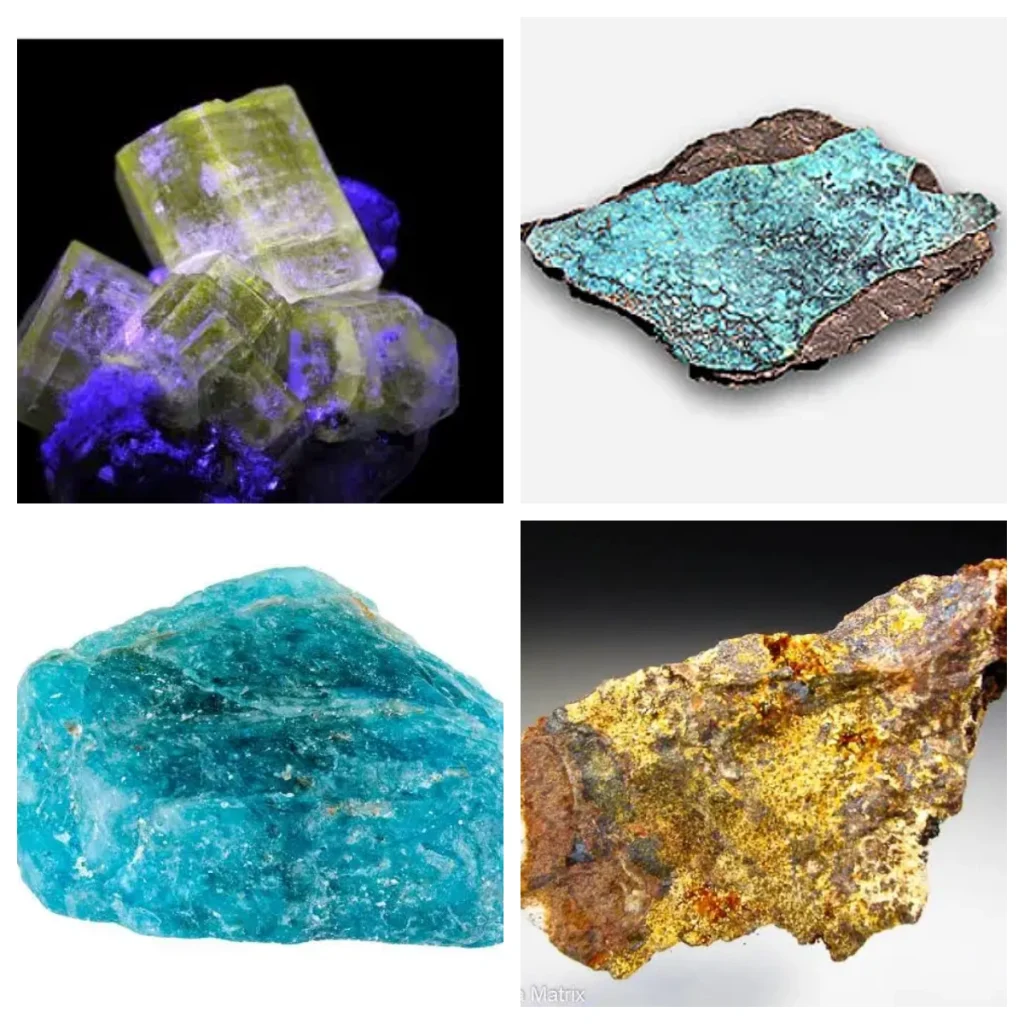
Что такое фосфатные руды и фосфатные минералы?
Фосфатная руда – это общее название для экономически выгодных фосфатных минералов. Она может использоваться для производства фосфатных удобрений, а также жёлтого фосфора, фосфорной кислоты, фосфидов и других фосфатов для таких отраслей промышленности, как фармацевтика, пищевая промышленность, производство спичек, красителей, сахарная промышленность, керамика и национальная оборона. Промышленное применение фосфатной руды имеет более чем столетнюю историю. В зависимости от состава фосфатные руды можно разделить на апатиты и фосфориты.
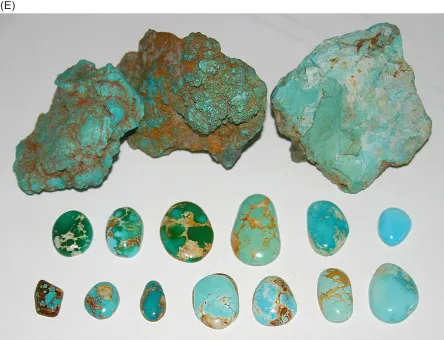
Апатит относится к фосфатным породам, в которых фосфор присутствует в форме кристаллического апатита в магматических и метаморфических породах.
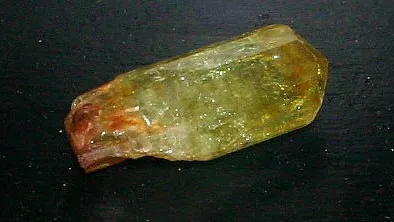
Фосфорит относится к осадочным отложениям, образованным экзогенными процессами, состоящим из криптокристаллического или микрокристаллического апатита и других жильных минералов.
В природе известно более 120 фосфорсодержащих минералов, широко распространенных. Однако лишь немногие из них отвечают требованиям по качеству и количеству для добычи и использования. Основным фосфорсодержащим минералом, используемым в промышленности для извлечения фосфора, является апатит, за которым следуют такие минералы, как сванбергит, струвит и вивианит. Около 951 триллиона триллионов фосфора в природе сосредоточено в апатите.
Мировой рынок фосфатных руд весьма значим. В 2024 году во всем мире было добыто более 220 миллионов тонн фосфатных руд. Основная часть этой добычи — около 801 млн тонн фосфатных руд — направляется на производство удобрений, обеспечивая глобальную продовольственную безопасность. Оставшаяся часть используется в таких отраслях, как производство кормов для животных, пищевых добавок, водоподготовка, производство антипиренов, керамики, моющих средств и бурно развивающийся сектор литий-железо-фосфатных аккумуляторов.
После извлечения фосфатные минералы подвергаются обогащению, в ходе которого апатит отделяется от нежелательных породных примесей. Полученный концентрат часто преобразуется в фосфорную кислоту или напрямую перерабатывается в моноаммонийфосфат, диаммонийфосфат и двойной суперфосфат. Для современных применений, включая производство высокоэффективной керамики или прекурсоров катодов аккумуляторов, требуются ещё более тонкие и чистые фосфатные порошки.
Зачем использовать струйные мельницы для фосфатных порошков?
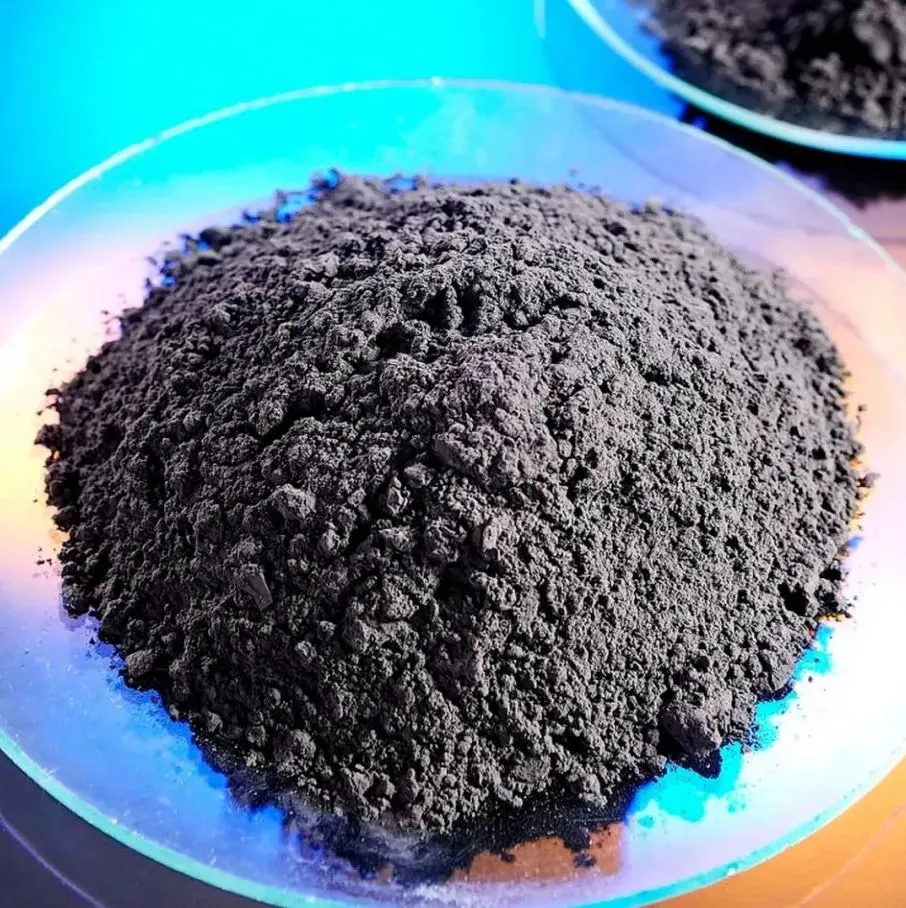
Путь от добытой горной породы до получения функционального фосфатного порошка включает несколько этапов измельчения и классификации. Струйное измельчение всё чаще применяется для получения ультратонкого и высокоценного продукта. Традиционные шаровые или молотковые мельницы обеспечивают небольшое измельчение частиц. Однако они, как правило, не способны обеспечить получение порошка размером менее 20 микрон, необходимого для новых технологий, и могут вносить металлические примеси, повышать температуру или создавать широкий диапазон размеров.
В струйной мельнице частицы фосфата перемещаются со сверхзвуковой скоростью в закрытой камере с помощью высокоскоростного сжатого воздуха или инертного газа. Столкновения частиц способствуют их дальнейшему измельчению. Никакие механические измельчающие части не соприкасаются с порошком, что обеспечивает минимальное загрязнение и постоянную чистоту продукта.
Операторы могут точно контролировать распределение размера частиц, регулируя давление воздуха, скорость подачи и настройки классификатора. Для удобрений и кормовых добавок критически важны постоянная скорость потока и растворимость порошка — струйные мельницы помогают достичь этих целей. Для производства литий-железо-фосфатных аккумуляторов или керамических глазурей обычно требуются ультратонкие порошки с размером частиц D50 от 2 до 10 микрон. Струйное измельчение часто является единственным экономичным и эффективным способом достижения этой спецификации.
Реальные данные подтверждают эту ценность. Заводы, использующие струйные мельницы, сообщают о снижении размера частиц порошка на 35–45%, улучшении текучести почти на 25% и увеличении общего выхода продукта. Фосфаты, измельченные струйной мельницей, также растворяются более равномерно, что повышает скорость реакций на последующих этапах химической переработки и обеспечивает более однородное смешивание на предприятиях по производству рецептур.
Ключевые вопросы, которые следует учитывать при струйном измельчении фосфатных минералов
Переработка фосфатных минералов методом струйной мельницы требует тщательного планирования и контроля ряда параметров. Однородность исходного сырья имеет первостепенное значение. Для обеспечения стабильного потока материала, предотвращения засорения камеры и поддержания производительности может потребоваться предварительное дробление или просеивание.
Давление газа и расход воздуха должны быть оптимизированы. Более высокое давление приводит к образованию более мелких частиц за счёт увеличения энергии удара, но чрезмерное усилие может привести к образованию нежелательных частиц, повышенному расходу энергии и повышенному износу компонентов сопла и подкладки. Баланс производительности и целевого размера частиц требует технических знаний и зачастую проведения пилотных испытаний.
Содержание влаги является ещё одним критическим фактором. Фосфатные минералы могут быть гигроскопичными. Избыточная влажность может привести к слипанию частиц или их прилипанию к стенкам камеры, что затрудняет поток и приводит к неравномерному размеру частиц. Использование систем сушки и сухого сжатого воздуха может помочь сохранить характеристики порошка во время измельчения.
Поскольку фосфат часто используется в высокочистых или чувствительных приложениях, контроль загрязнения не подлежит обсуждению. Струйные мельницы с футеровкой из карбида кремния или высокоплотного оксида алюминия предотвращают выщелачивание металлов. ЭПИКСтруйные мельницы компании регулярно проходят замеры, чтобы поддерживать уровень загрязнения металлами ниже 5 ppm, гарантируя соответствие стандартам в области аккумуляторных батарей и фармацевтических препаратов.
Необходимо контролировать повышение температуры во время измельчения, несмотря на то, что струйные мельницы выделяют меньше тепла по сравнению с механическими мельницами. Для чувствительных к нагреву последующих этапов, например, в катодах LiFePO4, необходимо контролировать температуру в камере и, при необходимости, использовать охлаждающий газ.
Наконец, безопасность всегда в приоритете. Мелкая фосфатная пыль может представлять опасность при вдыхании или взрыве, поэтому эффективное пылеулавливание, снижение взрывоопасности и изоляция процесса имеют решающее значение.
Преимущества и недостатки струйного измельчения фосфатных минералов
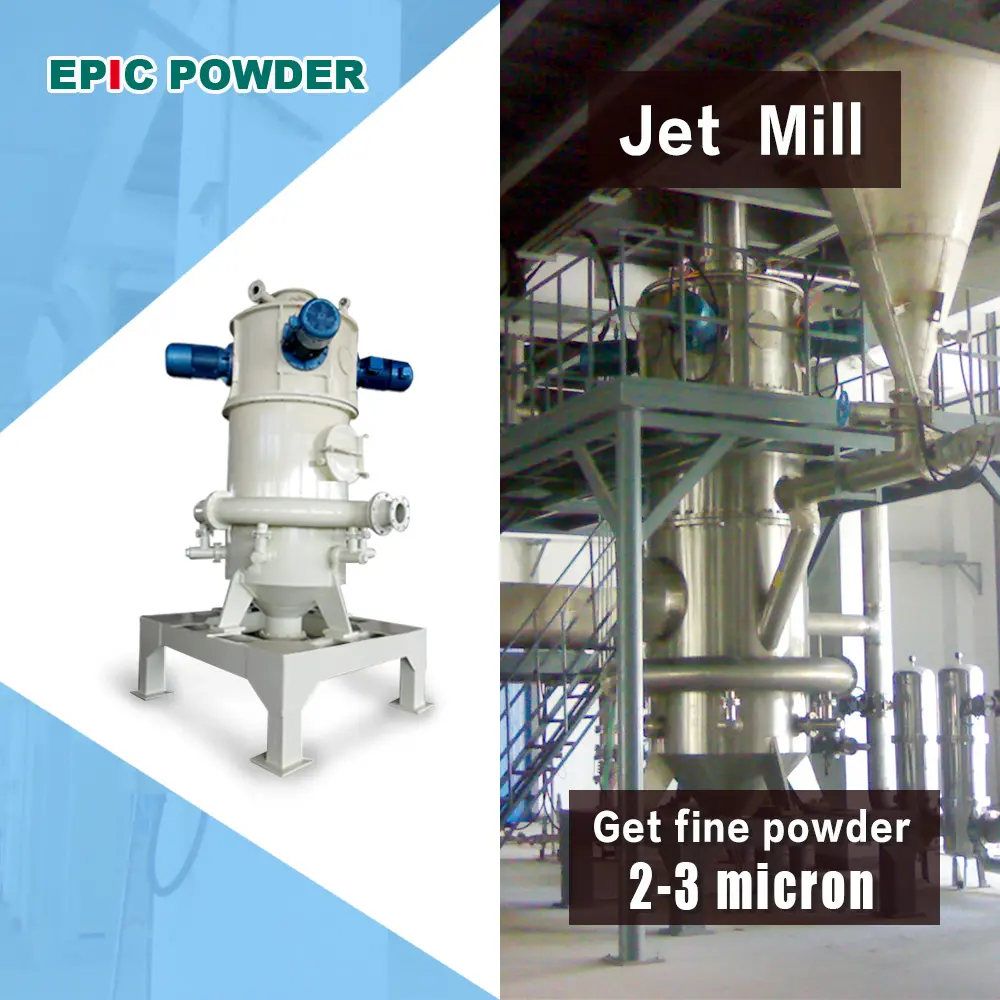
Когда речь идёт о фосфатных порошках, струйная мельница обеспечивает непревзойдённые преимущества для некоторых областей применения. Главное из них — возможность получения ультратонких порошков с узким распределением размеров частиц, что критически важно для таких ценных отраслей, как производство аккумуляторов, высокопроизводительной керамики и микрокристаллических удобрений.
Струйное измельчение минимизирует загрязнение. Отсутствие механического контакта обеспечивает очень низкий уровень внесения железа, хрома и никеля, что обеспечивает высокую пригодность для производства современных и регламентируемых продуктов. Закрытый, беспыльный процесс снижает воздействие на оператора и выбросы в окружающую среду, что соответствует более строгим международным требованиям безопасности.
Охлаждение во время измельчения сохраняет химическую структуру и цвет фосфатных материалов. Это особенно важно при производстве специальной керамики или функциональных порошков, где даже незначительные фазовые изменения могут негативно сказаться на выходе готовой продукции.
Струйные мельницы также масштабируемы. Они легко подходят для серийного или непрерывного производства, позволяя системам обрабатывать от нескольких килограммов в час до более тонны в час.
Однако эти преимущества необходимо сопоставить с некоторыми недостатками. Струйное измельчение относительно энергоёмко, особенно при измельчении до размеров менее 10 микрон или при использовании крупнозернистого сырья. Операторам приходится учитывать расходы на сжатый воздух или азот, а также на замену изнашиваемых деталей — абразивная природа фосфатных минералов означает, что сопла и вкладыши требуют периодической замены.
Первоначальные инвестиции в высококачественную струйную мельницу также выше, чем в традиционные механические измельчители. Кроме того, управление процессом требует квалифицированной команды, которая должна тщательно контролировать параметры, чтобы избежать переизмельчения, образования излишков мелких частиц или прерывания процесса.
Несмотря на эти недостатки, для отраслей промышленности, которым требуются высококачественные фосфатные порошки, струйные мельницы часто представляют собой наиболее эффективный и экономичный способ производства.
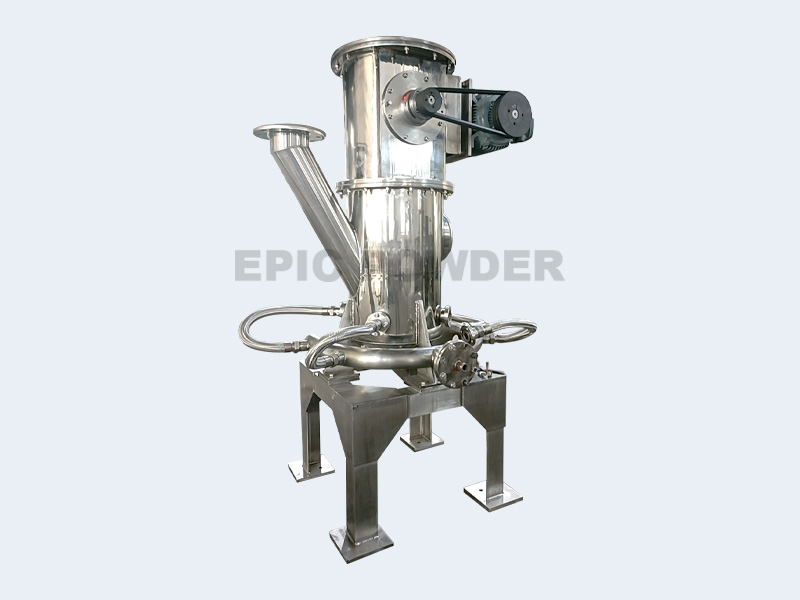
Каких эффектов можно достичь с помощью струйной мельницы EPIC для фосфатных минералов?
Струйные мельницы, разработанные компанией EPIC Powder Machinery, спроектированы с учётом этих задач и возможностей. Наши системы поддерживают точную регулировку давления газа, скорости подачи и скорости сепаратора. Эта гибкость обеспечивает производство фосфатного порошка со стабильными, воспроизводимыми результатами. Достижимые значения D50 обычно варьируются от 2 до 50 микрон, что соответствует требованиям производителей удобрений, аккумуляторных материалов и технической керамики.
Данные независимых организаций, модернизировавших заводы на струйные мельницы EPIC Powder, продемонстрировали повышение однородности порошка до 30% и снижение потерь на последующих этапах процесса из-за передозировки или плохой растворимости более чем на 20%. В области производства прекурсоров для аккумуляторов наши клиенты сообщают о более высокой плотности электродов и более стабильной работе, в то время как производители удобрений отмечают более быстрое растворение и повышение уровня усвояемости фосфора растениями, что улучшает результаты полевых работ.
Мы используем современную керамику и износостойкие покрытия во всех зонах контакта с материалами. Это продлевает срок службы оборудования и обеспечивает химическую целостность чувствительных продуктов. Наши комплексные решения по пылеподавлению и замкнутая система работы обеспечивают безопасность на рабочих местах и способствуют соблюдению нормативных требований.
Благодаря модульной конструкции наши струйные мельницы позволяют компаниям масштабировать производство с минимальными простоями во время технического обслуживания. Регистрация данных и удобные порты для отбора проб облегчают контроль качества в режиме реального времени, помогая производителям стабильно соблюдать строгие требования.
Заключение и свяжитесь с нами
Спрос на высококачественные фосфатные порошки растёт из года в год, поскольку различные отрасли, от сельского хозяйства до электроники и передовой энергетики, разрабатывают новые, более эффективные продукты. В этих условиях струйное измельчение обеспечивает чистую, точную и контролируемую технологию обработки, необходимую для успеха. ЭПИК порошковое оборудование Мы предлагаем решения, которые напрямую решают проблемы переработки фосфатных минералов. Наш опыт, индивидуальное проектирование и техническая поддержка гарантируют каждому клиенту достижение необходимой чистоты, размера частиц и однородности продукта для его целевых рынков.
Для технической консультации, проведения пробной обработки или обсуждения того, как струйные мельницы EPIC Powder могут помочь вам улучшить производство фосфатного порошка, свяжитесь с нашей командой специалистов уже сегодня. Мы готовы помочь вам добиться новых успехов в любой отрасли, где вы работаете. Мы покажем вам, как превосходная обработка порошка может изменить ситуацию.